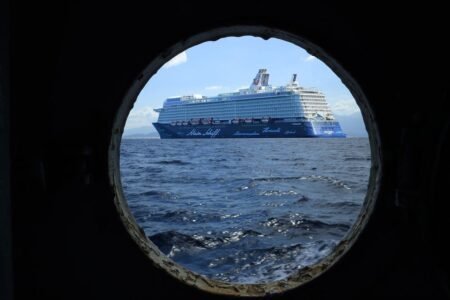Differing views about the costs and benefits of introducing 18 or 20 weeks of fully-paid maternity leave and two weeks of fully-paid paternity leave were voiced by MEPs and invited experts at a joint workshop held on 5 October by the European Parliament’s Women’s Right Committee and Employment Committee.
Advertisement
MEPs debated the conclusions of an impact assessment on the costs and benefits of a longer maternity leave. Below are some replies to the most frequently asked questions.
What is the aim of the impact assessment?
The impact assessment attempts to determine the economic and social costs and benefits of the amendments tabled by the two parliamentary committees: “a right to maternity leave of 20 weeks fully paid plus two weeks of paternity leave” (proposal by the Women’s Rights and Gender Equality, lead committee) and “a right to 18 weeks of fully paid maternity leave) (proposal by the Employment Committee, acting as associated committee).
It was commissioned by Parliament from an external company and will aim to provide MEPs with further information before the plenary vote.
In line with the Council/Parliament/Commission inter-institutional agreement on better lawmaking and Parliament’s Conference of Committee Chairs guidelines, both committees requested a first-reading impact assessment on the “substantive amendments” adopted by the Women’s Rights committee on 23 February 2010.
What are the study’s conclusions concerning the costs of the proposals?
The study, conducted in 10 Member States, presents four different scenarios: fully paid maternity leave of 18 weeks and 20 weeks, each with possible substitution rates of 30% and 80%, as well as 2 scenarios for fully-paid paternity leave of 2 weeks at substitution rates of 0% and 30%.
The costs of the proposals vary among the Member States, because the status of both maternity and paternity leave schemes differs from country to country. The analysis also demonstrates the importance of the substitution rate for economic costs.
In the highest cost scenario, i.e. fully-paid maternity leave of 20 weeks and a substitution rate of 30%, the total economic costs per year vary from 0 (Estonia, Poland) to 1.324 million (United Kingdom).
What do the different costs presented in the impact assessment refer to?
The costs mentioned in the impact assessment include:
– costs per birth,
– total economic costs per year: costs per birth multiplied by the average number of birth,
– total economic costs as percentage of GDP,
– net present value (NPV) of total economic costs over a 20 year period, and
– NPV employer costs and NPV public expenditure: NPV of costs borne by employers and the public sector over a 20 year period.
Why have the benefits not been quantified in monetary values?
According to the study, the benefits are in general difficult to quantify and estimate in monetary terms, hence the qualitative approach that has been pursued in the impact assessment. Among the qualitative benefits, the study mentions child development and health effects, mother’s health, cost savings of childcare for the number of added weeks and, to a lesser extent, fertility rate.
In addition, two briefing notes on a “methodology to quantify the benefits of maternity leave” and “on the benefits of maternity leave and parental leave in the EU 27” have been made available. Those studies notably analysed benefits generated by maternity leave in terms of health-cost savings, increased productivity and work and family balance.
On which criteria have the ten Member States analysed in the study been selected?
The impact assessment was conducted in ten Member States: Belgium, Denmark, Estonia, France, Germany, Hungary, Poland, Spain, Sweden and the United Kingdom.
Due to the time constraints of Parliament’s calendar, the experts used the national data of eight of these Member States, as they were presented in a 2008 impact assessment made available by the European Commission and published at the same time as the initial legislative proposal of 3 October 2008. In addition, the study was conducted in Germany, which has the largest population in the EU, and Sweden, due to its specific scheme on parental leave.
Source: European Parliament







